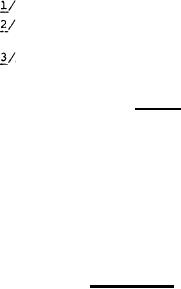 |
|||
|
|
|||
| ||||||||||
|
|  MIL-P-18526A(SH)
Referred to centerline of pump inlet.
Suction lift:
5 inches of mercury (in Hg) - grade JP-5 fuel in accordance with MIL-T-5624.
10 in Hg - marine diesel fuel (DFM) in accordance with MIL-F-16884,
Temperatures do not necessarily correspond with the viscosity range, but indicate temper-
ature pumps may be expected to encounter in service.
3.3 General design. Design and construction of pumps shall comply with the space and
weight requirements as specified (see 6.2.1). Pump unit shall perform under the list, pitch,
roll, and trim conditions as specified (see 6.2.1).
3.3.1 Pumps shall be self-priming and capable of removing air from the suction lines,
but shall be primed before initial startup.
3.3.1.1 Where the lubrication of the pumps is supplied by the fluid pumped, all parts
of the pumps shall operate in accordance with the requirements of this specification when
pumping these fluids.
3.3.1.2 Tolerances shown on a drawing shall be complied with during manufacture unless
otherwise indicated by note, legend, or key.
3.3.2 Reliability. Users of and contractors to this specification are urged to com-
municate to the Naval Ship Engineering Center (NAVSEC) any find.ings related to the require-
ments or lack of requirements of this specification whereby improvement of equipment relia-
bility can be achieved. Equipment specified herein shall be operated, maintained, and re-
paired onboard Navy ships. Attention is directed to the high equipment density of ship-
board machinery spaces, to the fact that required maintenance and repair shall be capable
of being made underway in heavy seas, that equipment shall operate unattended, and that
maintenance personnel may not be experienced mechanics. The requirement for maximum relia-
bility directly relates to those shipboard environmental and service conditions and they
shall be fully considered in the pump design. Aspects of "human engineering" design shall
also be fully explored and implemented in the equipment design to minimize the possibility
of failure through improper operation and maintenance and to preclude personnel safety
hazards. In no case shall parts be physically interchangeable or reversible unless such
parts are also interchangeable functionally and from considerations of reliability.
3.3.2.1 Positioning and alinement of parts in assembly shall employ positive means
such as shoulder, tongue and groove, or other locating techniques whereby correct reassembly
is repeatedly assured. In consonance with the concept of ease of maintenance and where not
already specified, the pump designer shall consider the following features for incorporation
in the design and technical documentation wherever such incorporation will significantly
contribute to ease of maintenance without compromising performance reliability:
(a)
Casing assembly guide pins.
Alinement and solid positioning dowels.
(b)
(c)
Jacking screws.
(d)
Ease of access to couplings.
Remakeable piping connections.
(e)
(f)
Piping out of way of maintenance access.
Ease of mechanical seal and bearing replacement.
(g)
Guards for rotating and moving components.
(h)
Warning plates to prevent casualties to equipment and personnel.
(i)
Provisions for connecting instruments for performance evaluation.
(j)
Attached instruments for monitoring performance.
(k)
Visibility and access to attached instruments.
(1)
Thoroughness of operating instructions.
(m)
Thoroughness of preventive maintenance instructions.
(n)
Explicit assembly and disassembly instructions.
(o)
3.3.2.2 Each pump shall be designed to have a service life of 30 years, of which 40
percent shall consist of actual operation. There shall be no limit on the number of starts
during the life of the pump. It shall be assumed that during the life of the pump, parts
subject to unavoidable wear and deterioration (with the exception of seals) shall require
replacement at intervals not less than 3 years. Parts subject to wear, deterioration, and
normally requiring replacement at 3 year intervals during the service life of the pump (with
the exception of seals) shall be designed for a life of 10,000 actual operating hours
pumping the fluid specified (see 6.2.1) and they shall be identified in the appropriate
drawings and manuals. Requirements set forth above shall not be construed or interpreted
as a warranty requirement nor otherwise affect the manufacturer's warranty.
4
|
|
Privacy Statement - Press Release - Copyright Information. - Contact Us |